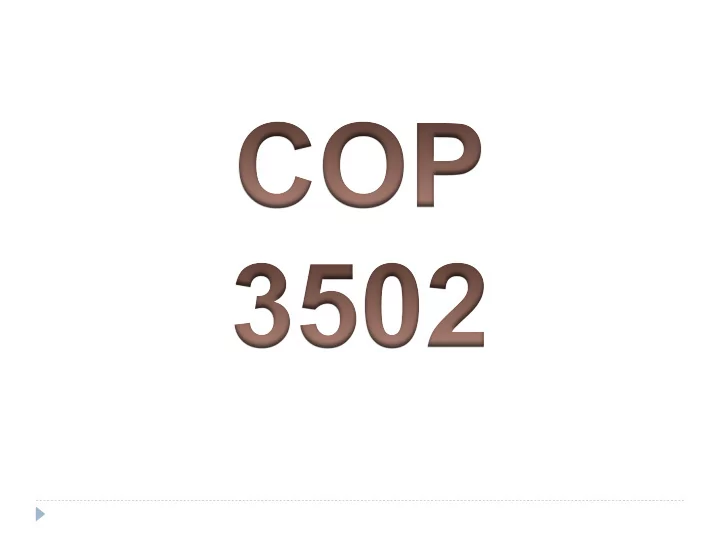

Algorithm 1 1. Stand up and think of a number 2. Pair off with someone standing, add your numbers together, and adopt the sum as your new number 3. One of you should sit down; the other should go back to step 2, unless you are the sole person standing
Algorithm 2 GAME Alice: Guesses a random 4 number < 20. Bob: Can only ask Binary questions. What is the minimum number of questions that Bob needs to ask to get to Alice’s number.
Time taken to solve the problem Size of the problem
APIs http://www.fun-with-pictures.com/house-stencil.html
APIs Do one thing, and do it well SYNOPSIS As small as possible, but not smaller Intuitive and easy #include <math.h> double sqrt(double X); DESCRIPTION: sqrt computes the positive square root of the argument. ... RETURNS: On success, the square root is returned. If X is real and positive... Python import math math.sqrt(x)
Hello, world! /* In C */ #include <stdio.h> int main (void) { printf(“Hello, world!”); } In Python: print(“hello world”)
Basic knowledge about computers To utilize computers you need both hardware and software Hardware Desktop, laptop. Hardware Operating systems Windows XP , Vista, Unix, Linux, MaxOS Operating system Software Applications Software Applications Office, Photoshop
Hardware Central processing unit (CPU) calculate, compute, etc. Random access memory (RAM) store temporary data I/O device input/output device
Hardware
Operating System Examples of popular modern operating systems include Android, BSD, iOS, Linux, Mac OS X, Microsoft Windows, [3] Windows Phone, and IBM z/OS. An operating system ( OS ) is a collection of software that manages computer hardware resources and provides common services for computer programs.
Application Software Application software , also known as an application or an app , is computer software designed to help the user to perform specific tasks. Examples include enterprise software, accounting software, office suites, graphics software and media players.
Expectations attend all lectures class participation mid term and final Quizzes and weekly assignments Practice programming/tools on your own (4hrs+/week)
Expectations Own a laptop/desktop with root/administrator access Windows / Mac / Linux Preferably : Ubuntu with root. Get a CS Garnet account. And make sure you have ssh client installed on your computer.
Grades Pass/Fail or letter grade weekly assignments + quizzes (weight: 90) attendance + class participation (weight: 10) min midterm (weight: 50) final (weight: 50)
Office Hours Mon: 4.15pm – 5.15pm, Love 161
Weekly Lectures Mon: 5.15pm – 6.35pm, Love 103
Course Plan Subject to Change a bit as we progress The following slides will be updated to reflect this as the semester unfolds
Week 0 Introduction. Bits. Binary. ASCII. Unicode Programming. Algorithms. Statements. Boolean expressions.
Week 1 C. Source code. Compilers. Object code SSH. SFTP . GCC. Functions. Comments. Standard I/O. Arithmetic operators. Precedence. Associativity. Local variables. Types. Casting. Libraries. Boolean expressions continued. Conditions continued. Loops continued.
Week 2 Functions, continued. Global variables. Parameters. Return values. Scopes. Arrays Strings. Command line arguments. Cryptography.
Week 3 Linear search. Binary Search. Asymptotic notation. Recursion. Pseudo randomness. Bubble sort. Selection sort. Insertion sort. Merge sort. Debugging.
Week 4 Structures. Debugging, continued.
Week 5 File I/O. Forensics. Linked lists. Stacks. Queues.
Week 6 Valgrind. Bitwise operators. Hash tables. Trees. Binary search trees. Tries. Huffman coding.
Week 7 HTTP. HTML. SQL.
Week 8 CSS. Inheritance. JavaScript. Events, continued. Ajax.
Week 9 More Python
to be continued...
Recommend
More recommend